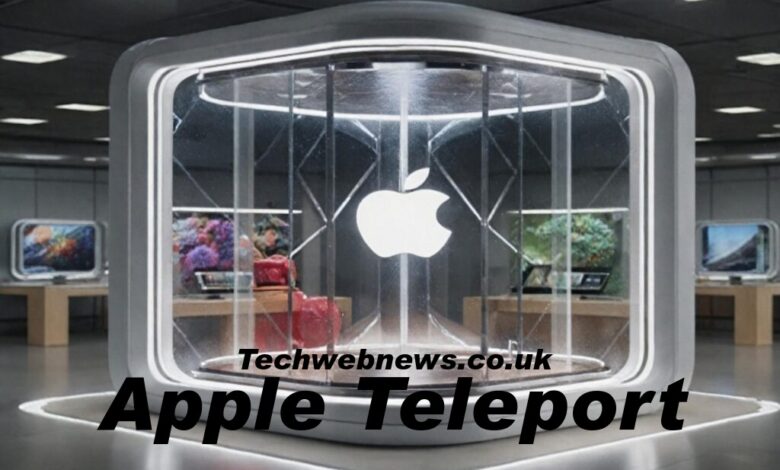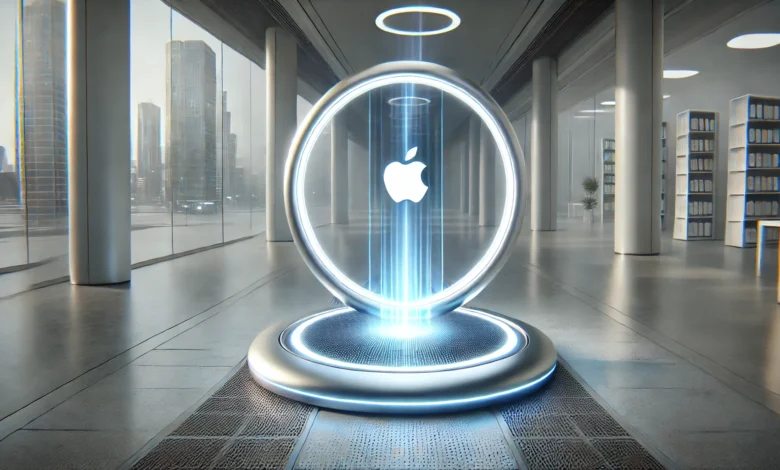Apple Teleport: The Future of Seamless Connectivity

Introduction to Apple Teleport
Apple Teleport When we think of Apple, the first things that usually come to mind are sleek iPhones, reliable MacBooks, or the stylish Apple Watch that sits comfortably on our wrists. Over the years, Apple has mastered the art of designing not just devices, but entire ecosystems that interact with one another in ways that feel both futuristic and natural. This is where the idea of Apple Teleport comes into play.
Now, let’s clear one thing up right away—Apple Teleport is not about physically transporting yourself across the globe like in a sci-fi movie. Instead, it’s about eliminating the invisible friction between devices, services, and digital experiences. Think of it as a kind of “digital teleportation,” where your information, actions, and workflows move seamlessly from one Apple device to another, as if they were all part of a single organism.
Apple Teleport can be imagined as the natural evolution of Apple’s current ecosystem. While today we already enjoy tools like Handoff, AirDrop, and Universal Clipboard, Teleport takes that idea to a much grander scale. It envisions a world where every digital move you make is instantly mirrored across your devices without lag, confusion, or complicated setups. In short, it’s Apple’s answer to the growing demand for true digital fluidity.
The Concept Behind Apple Teleport

Apple has always prided itself on keeping things simple for the user, even if it means working incredibly hard behind the scenes to achieve that simplicity. The idea of Apple Teleport fits perfectly into that philosophy. It’s not about creating new devices; it’s about enhancing the way we already use them.
Imagine typing an email draft on your iPhone during a commute. The moment you sit down in front of your MacBook, the draft is already open, cursor in place, ready for you to finish. Or picture editing a photo on your iPad, and without pressing any buttons, that same edit session is already live on your Mac—layers intact, progress saved, and no extra exporting needed. That’s what Apple Teleport promises.
The underlying concept here is continuity on steroids. Current features like iCloud and Handoff provide a taste of this, but they often require manual intervention, and sometimes, they can be finicky. Teleport would aim to remove those gaps, functioning almost invisibly, so users feel like they are working on one giant, interconnected Apple Teleport device rather than juggling multiple gadgets.
Why the Name “Apple Teleport”?
Apple Teleport doesn’t pick names randomly. If this concept were ever to be branded officially, “Teleport” would make sense. The word conveys speed, instant movement, and the idea of being in two places at once—exactly what the technology aims to deliver.
When you copy something on your iPhone and paste it on your iMac, you’re essentially teleporting that information. When your Apple Teleport Watch unlocks your Mac the moment you sit in front of it, that’s teleportation in action—your presence is instantly transferred from one device to another. By giving this invisible interaction a name like “Teleport,” Apple adds a futuristic yet relatable identity to something most people already want: instant, effortless syncing.
And let’s face it—Apple Teleport knows how to make even the most technical features sound sleek and aspirational. Just as “AirDrop” isn’t literally about dropping files through the air, “Teleport” wouldn’t be about sci-fi transportation. It would be about capturing the imagination while describing the magic of digital movement.
How Apple Teleport Could Work in Daily Life
Let’s walk through some real-world scenarios to see how Apple Teleport might play out. These examples help illustrate just how impactful such a feature could be for both casual users and professionals.
Imagine you’re at work, reading an article on Safari through your iPhone. As you put your phone in your pocket and open your Mac, the browser session is already open in the exact same place, scrolling included. You don’t even have to click “sync.” It feels like you’ve just Apple Teleport the experience.
Now picture a designer using an Apple Teleport Pencil on an iPad to sketch an idea. They set it aside, pick up their MacBook, and the same sketch—still editable—is already there, with no need for exporting or importing. The workflow continues seamlessly, as though the iPad and Mac are extensions of each other.
Even entertainment could benefit. You’re halfway through a movie on Apple Teleport TV, but suddenly you need to leave the room. Instead of pausing, you pick up your iPhone and the film continues at the exact frame, instantly. The concept of “where you left off” becomes obsolete because you never actually leave off—it just teleports with you.
The Technology Driving Teleport
Of course, this level of connectivity doesn’t happen magically. It would require a powerful combination of hardware, software, and cloud-based systems. Apple Teleport existing technologies provide clues about how this might work.
First, there’s iCloud, which already stores and syncs files, settings, and app data. For Apple Teleport, iCloud would need to operate at lightning-fast speeds, handling not just files but active states of applications. Instead of just saving data, it would replicate your entire ongoing session across devices.
Next, there’s Apple Teleport Silicon, which ensures that iPhones, iPads, and Macs all share similar architecture. This shared DNA makes it easier for apps to transition seamlessly between devices, since they are already speaking the same technical language.
Finally, proximity awareness from features like Apple Teleport and Continuity would be crucial. Your devices would constantly “sense” each other and decide when to transfer sessions. This would happen in the background with ultra-low latency, so users never notice the mechanics—only the results.
Potential Challenges and Limitations
As exciting as Apple Teleport sounds, there would be challenges to overcome. For one, real-time syncing at this scale demands a near-perfect internet connection. While Apple could implement local transfers between nearby devices, users in areas with poor connectivity might still experience hiccups.
Another challenge is privacy. Teleporting active sessions across devices means sensitive data is constantly moving. Apple Teleport would need to guarantee end-to-end encryption and airtight security to maintain user trust. Any breach in such a system could cause major concerns.
Battery consumption is also worth noting. If devices are constantly monitoring each other and updating session data, it could place additional strain on batteries, especially in smaller devices like the Apple Teleport Watch. Apple would need to balance this with its usual focus on efficiency.
Lastly, not all third-party developers might be ready to support such an ambitious system. Apple Teleport own apps like Safari, Mail, or Pages would likely integrate flawlessly, but convincing big third-party players to adapt might take time.
Why Apple Teleport Matters for the Future
If there’s one thing Apple does consistently well, it’s pushing the boundaries of what users expect from technology. Apple Teleport, whether it exists now or in the near future, represents the next step in a world where digital experiences need to feel less like separate tools and more like one continuous environment.
In an increasingly mobile-first world, people don’t want to stop and think about which device has what. They want continuity, speed, and simplicity. Apple Teleport addresses that by making devices fade into the background, leaving only the experience front and center.
For professionals, it could revolutionize productivity by eliminating tedious steps in workflows. For everyday users, it simply makes life easier and more enjoyable. Either way, it solidifies Apple Teleport reputation not just as a maker of gadgets, but as a pioneer of ecosystems that just work.
Conclusion: A Glimpse of Tomorrow
While Apple Teleport may sound futuristic, it’s really just the natural progression of what Apple has been building for years. It ties together the threads of iCloud, Continuity, AirDrop, and Universal Control into a single, cohesive vision of digital fluidity.
We may not have teleportation machines just yet, but in the digital sense, Apple Teleport is getting us pretty close. The idea of never losing your place, never having to restart a process, and never worrying about compatibility is more than just a luxury—it’s the future of personal technology.
Apple Teleport isn’t just a feature; it’s a philosophy. It’s about creating a world where devices don’t feel like separate tools but extensions of each other, enabling us to focus on what we want to do rather than how we do it. And if Apple’s track record is anything to go by, this future might be closer than we think.



